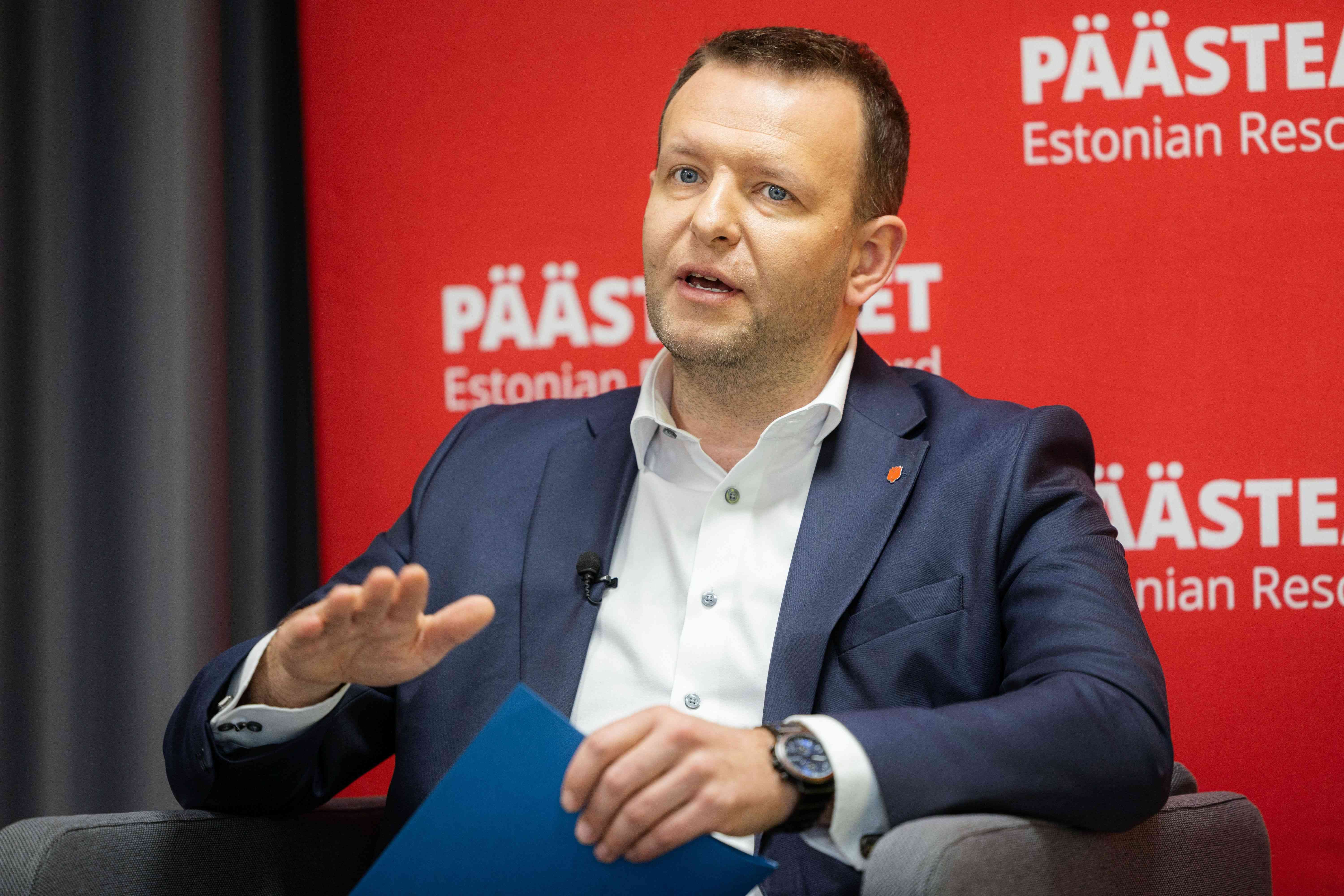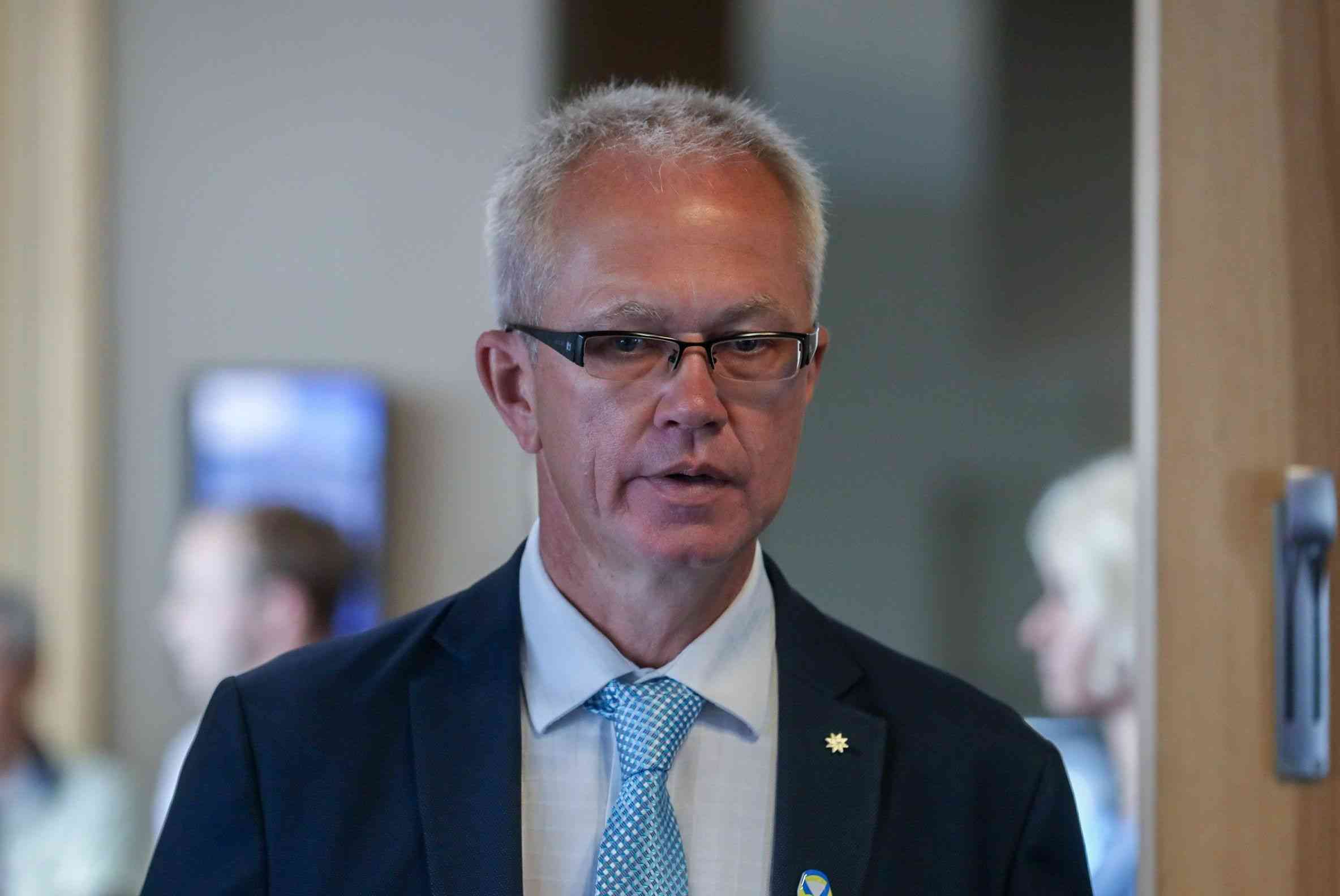Vox Populi
Kristo Enn Vaga
member of the national defense committee of the Riigikogu (Reform Party)
We are fighting Russia's shadow fleet mainly with three tools – sanctions, inspections, and force. Firstly,
sanctions. An effective measure that we apply together with our allies. This week, the EU adopted its 17th sanctions
package against Russia, adding 189 ships to the list, mostly oil tankers from Russia's shadow fleet. The list now
includes 342 ships that must not be serviced and are barred from using EU ports. The United Kingdom has imposed
similar sanctions. This list will soon be expanded even further.
Secondly, we must begin conducting physical document checks on more shadow fleet vessels. A full customs check is
already in place at the Estonian-Russian land border, and the same goal must apply at sea. If every country started
conducting more inspections from the Danish straits onward, we could gain a full overview of maritime activity in
our region.
Thirdly, the well-known truth holds: the aggressor (Russia) only understands force. If a shadow fleet vessel fails
to comply with navy orders in the future, we must respond just as Finland did last December – board it and
confiscate it. We changed the law to give Estonia's Navy the authority to take law enforcement action and, if
necessary, use military force against a vessel that poses a threat to vital infrastructure.
Let us remember that nearly 85 percent of Russia's energy exports move through the shadow fleet. If we shut that
down, the Kremlin will feel the pain. And the more pain for the Kremlin, the better for us and Ukraine.
Rudolf Jeeser
secretary-general of the Estonian Nationalists and Conservatives (ERK)
To control Russia's shadow fleet, a coordinated international oversight mechanism should be established, centered
on the Danish straits – a strategic gateway to the Baltic Sea. A joint NATO and EU mission unit should be created
there, tasked with targeted inspections of ships lacking a flag state or appearing suspicious.
The unit would use AIS sensors, drones, satellites, and operate under international law. Cooperation between VTS
systems must be strengthened, incorporating algorithms to detect course changes, stops in restricted zones, and AIS
signal losses. AIS data must be cross-checked with registry information to uncover re-registrations and ownership
changes.
Shared monitoring and response protocols would prevent the emergence of unmonitored zones. Information would be
relayed in real time to border guards, defense forces, and customs authorities. If instructions are ignored, an
intervention mechanism would apply. This would strengthen NATO and EU cooperation and enhance security across the
region.
Rasmus Lahtvee
deputy leader of the Estonian Greens
Influence operations that violate established rules are conducted on the world's seas using aircraft carriers. We have none, so we must respond to violators correctly, calmly, and proportionally.
Our strength lies in cooperation, and we must leverage all of Estonia's capabilities to enforce EU sanctions, improving member states' information exchange for identifying and monitoring Russia's shadow fleet. All owners of shadow ships, as well as the companies that service them, their boards, and ultimate beneficiaries, must be immediately added to the list of sanctioned entities. A prior warning must also be issued by the EU without delay. Such pressure clearly works, as demonstrated by Russia's recent actions, sending out a fighter jet that violated Estonia's border and detaining a tanker that left an Estonian port.
It is of course also worth revisiting the transcripts of the 1993 parliamentary committee debates on the draft Exclusive Economic Zone Act. These would reveal who proposed voluntarily giving up a three-nautical-mile strip in the Gulf of Finland, a corridor of strategic importance to Russia. This is precisely the corridor Russia now uses for rapid shadow fleet movements, and the reason why Estonia's ability to halt and inspect those ships there is so limited.
The fragile condition of the Baltic Sea, especially vulnerable to pollution, and thus Estonia's security and well-being, depend directly on our ability to engage and retain our international allies.
Lauri Läänemets
leader of the Social Democratic Party (SDE)
Russia's shadow fleet should not be allowed into the Baltic Sea at all. Once they reach Estonian waters, it is
already too late to deal with them – Europe must enforce its sanctions before the Danish straits. Yet everyone knows
that Denmark is one of the largest maritime nations and that it fears retaliation against its own ships in ports and
waters of unfriendly countries around the world.
Estonia cannot be the only country arresting shadow fleet vessels in the Baltic Sea; ultimately, seizing dozens of
tankers would overwhelm us due to our small size. It makes far more sense not to allow these ships into Estonian
waters and to communicate that clearly to vessels beginning their journey in the Baltic Sea. Thus, in addition to a
ban on port access, anchorage bans would apply, and waterway changes would make movement far more difficult for the
shadow fleet. If we catch a vessel violating our restrictions or potentially sabotaging our infrastructure, we must
respond decisively.
Since we have limited resources, we must choose ways to assert our authority without exhausting our capabilities. We
may need them in more decisive areas. Moreover, the adversary's intention may be to tie up and exhaust our units
before taking major steps. Therefore, a carefully considered yet unexecuted step is not always a failure, it can lay
the groundwork for a stronger response in the right place at the right time.
Heiki Lindpere
member of The Right
Firstly, it should be noted that the terms "shadow ship" and "shadow fleet" are not clearly defined legal concepts.
These terms refer to vessels whose identity — such as flag state, operator, beneficial owner, and ship name – is
concealed. Shadow ships are used not only to evade sanctions, but also to cut costs at the expense of maritime
safety, making tankers especially dangerous to other seafarers and the marine environment due to the risk of
catastrophic oil spills. They lack mandatory insurance for oil spill risks, meaning compensation required under
international conventions is unlikely to exceed the ship's scrap value.
On land, legal regulation is generally uniform, with state authority intact and sovereign. That is not the case in
maritime law – for example, peaceful passage through territorial waters is permitted for all ships.
However, if Estonia and Finland extended the outer limit of their territorial seas in the central Gulf of Finland to
the agreed median line, it would significantly increase their rights to stop, inspect, and, if necessary, seize
suspicious ships during damaging voyages. To achieve this, a law on the territorial sea, internal waters, and the
seabed beneath them must be urgently adopted in compliance with the UN Convention on the Law of the Sea and based on
Estonia's national interests. The Exclusive Economic Zone Act of January 1993 must also be revised, and a marine
environmental protection law finally enacted.
The idea of taxing entry into the Baltic Sea has been repeatedly floated in the media, to limit shadow fleet access
or offset the costs of repairing damaged cables. Monitoring the flags and registrations of shadow fleet tankers,
usually transporting oil products, should begin in the Danish straits as part of international cooperation and
continue until the ship exits the Baltic Sea.
Vladimir Arhipov
member of the national defense committee of the Riigikogu (Center Party)
Russia's shadow fleet is moving increasingly freely through European waters, bypassing sanctions to transport oil and fund the war of aggression. Many of these tankers pass through the Danish straits, the EU's strategic gateway to the Baltic Sea. If we do not control this gateway, the entire Baltic Sea becomes a gray zone.
These old ships, flying the flags of various Asian and African countries, pose environmental and security threats. Their transponders are switched off, they have no insurance, and their destinations are concealed. Estonia must not remain a silent bystander in this situation. The recent incident involving the shadow fleet tanker Jaguar clearly showed that Estonia cannot cope alone and must solve this issue together with the allies.
We must support Denmark and Sweden in establishing a Europe-wide control mechanism for our nearby waters. Estonia must also strengthen its own maritime surveillance, document suspicious ships, and make them public. Diplomacy alone will not stop the shadow fleet – concrete action is needed. EU and NATO member states must reach a consensus on how to proceed.
Kalev Stoicescu
chairman of the national defense committee of the Riigikogu (Estonia 200)
These two incidents are unrelated. In the first case, a Russian shadow fleet oil tanker did not stop in Estonia's
exclusive economic zone and ignored orders. Estonia responded according to its laws and international maritime law
using the means available at the time. The initial intent – to board and force the ship into Estonian territorial
waters for inspection – had to be abandoned. Russia sent a military aircraft to protect the tanker. Portuguese F-16s
based in Ämari were scrambled and flew to the incident location. The incident ended with both the ship and the
Russian aircraft heading back to Russia's economic zone and airspace.
The communication of the incident may be criticized, but not the actions of the Navy, Air Force, and Police and
Border Guard Board, who carried out their duties to the best of their abilities. One might ask whether we should
have responded at all. Of course we should have. At the same time, Estonia has been accused of outright failure and
of not achieving its goal. What goal was not achieved? Should we have attacked or sunk the ship if we could not stop
or board it with the available vessels and aircraft? Hardly. The ship left Estonian waters and did not damage
underwater infrastructure. This is a lesson for both Estonia and Russia.
In the second case, the ship departed from the Port of Sillamäe, received orders from Russian border guards – first
not to enter Russia's economic zone, then to exit it, meaning to head west – but did not comply, and was detained by
Russian border guards. Again, a lesson for ships using the Port of Sillamäe, including tankers: it is not wise to
venture into Russian waters. Maneuvering in that area is difficult, there is a risk of grounding, but it is still
possible to sail solely in Estonian waters. In this case, the actions of the Russian border guards are not subject
to criticism. Any claims of retaliation are speculative.
Mart Maastik
member of the Riigikogu (Isamaa)
Russia's two consecutive provocations with tankers have backfired: now, in addition to Estonia, Finland, and
Germany, all other Baltic Sea countries and the broader alliance recognize the severity of the issue. This is true
even in a case where decisions made by the tanker's captain were exploited by the Russians to their advantage.
Past incidents have shown Estonia's capability, or lack thereof, to prevent such events, and it is clear we cannot
be left to deal with this issue alone. We must protect our economic zone and assert our rights there, but the shadow
fleet problem is broader.
The latest EU-wide sanctions package also focuses on the shadow fleet, as these ships are a lifeline for Russia's
wartime economy. Monitoring them must be a coordinated task and goal for all Baltic Sea states.
Only through joint action can we meaningfully reduce the number of these ships in the Baltic Sea. Cooperation is
key, it would be unfair to place all the responsibility on Denmark, through whose waters the ships enter. We must
all make a concerted effort.
This is also evident from incidents involving underwater infrastructure: they have not occurred only in the Gulf of
Finland, the number of affected countries is far greater. These same infrastructure vulnerabilities must be
considered when building new connections: for example, routing the fourth Estonia-Latvia link via Saaremaa is not
only many times more expensive than a land-based route, but also significantly more vulnerable to all kinds of
malicious interference.







